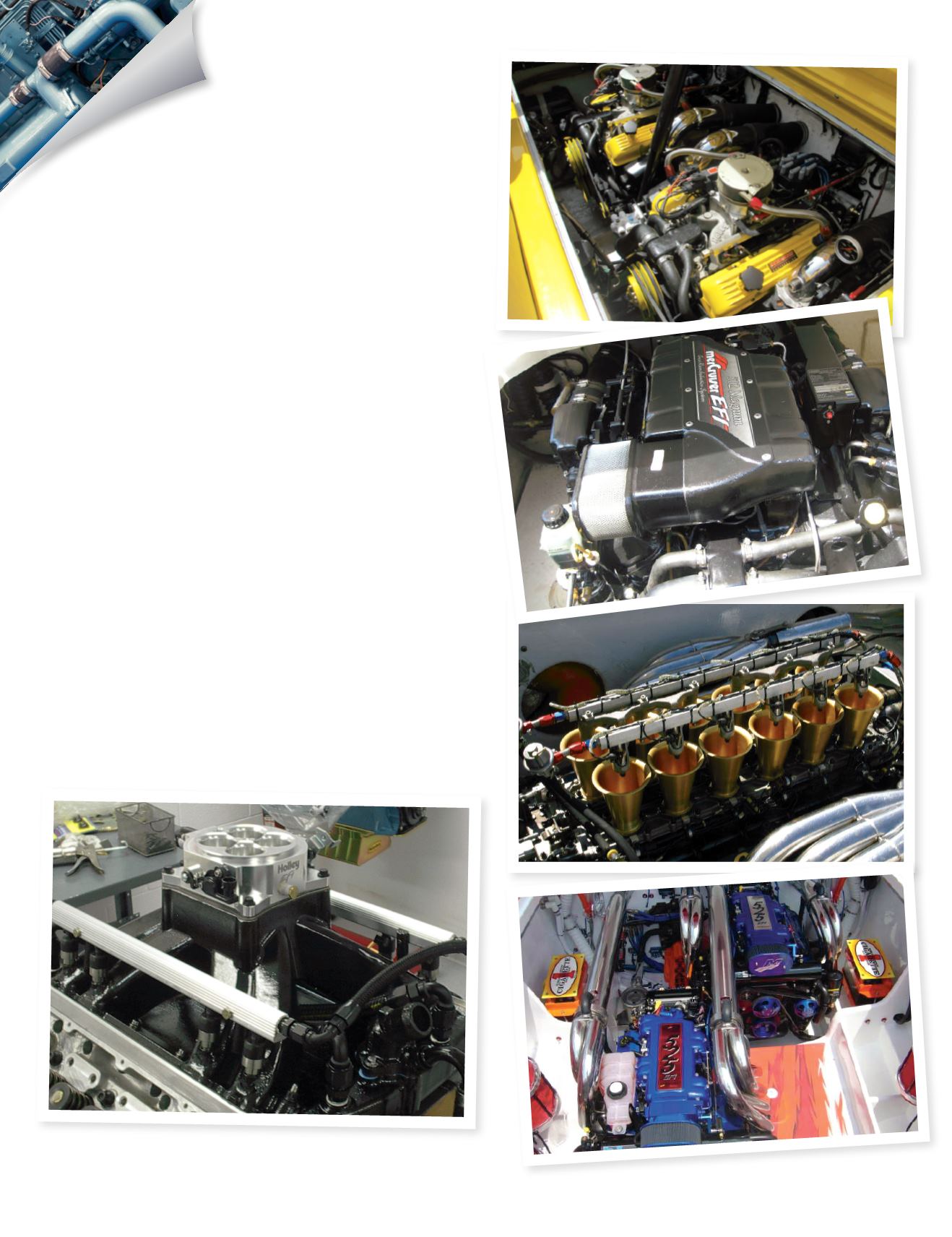
22
MARINE TECHNICIAN TODAY
|
WINTER 2014
reprogrammed in the ECM, our project will
not reach its full potential, and without it we
actually can decrease the running quality of the engine.
In following articles I will address each engine (listed above)
specifically regarding each platforms unique opportunities. I will discuss
many of the changes that can be made, why they are made and what
benefits can be expected. At that point we can get some before and after
performance evaluations to help gauge our performance gains.
Before we get into actual power numbers, we need to talk about
correction factors regarding dynamometer testing. There are two
main correction factors used to standardize results with varying
atmospheric conditions: SAE J-1349, which adjusts the prevailing
test conditions to 77 degrees F and 29.92 in-Hg of barometric
pressure; and SAE J-607 (also known as Standard Temperature
and Pressure or STP for short), which corrects the test data to 60
degrees F and 29.23 in-Hg of barometric pressure. Most of the
OEM manufacturers use SAE J-1349 to rate engine power output,
measured at the flywheel. Most magazines, race engine builders and
aftermarket companies use SAE J-607 STP correction factors when
quoting dynamometer horsepower figures. The difference between the
two correction factors is generally 5 percent as a result of the STP factor
having a colder air correction factor.
For more information about marine engine development contact Bob Madara,
Marine Kinetics 114 Woodrow Ave. Rochester NY 14609. Phone 585-654-8583
email;


